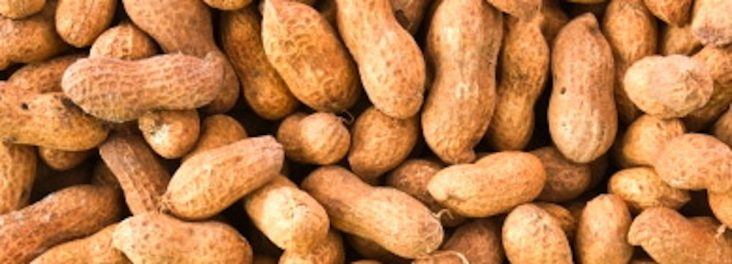Peanut acres slightly down in Northeast Arkansas
by January 22, 2019 8:04 pm 519 views

For the third straight year, farmers in Northeast Arkansas planted more than 20,000 acres of peanuts as the legume continues to make a comeback in the Natural State after not being grown in Arkansas for decades. Producers were projected to harvest about 25,000 peanut acres, a 5,000 acre drop from 2017, according to the U.S. Department of Agriculture’s National Agricultural Statistics Service.
The leading peanut growing counties include Craighead, Mississippi, Lawrence, and Randolph. Travis Faske, extension plant pathologist who also serves as peanut agronomist for the University of Arkansas System Division of Agriculture said heavy rains in the fall considerably slowed the harvest.
“In May, the 2018 crop was planted within a narrow three-week window and conditions were ideal for peanut production, other than it was dry in June and July,” Faske said. “Harvest was about 25% behind 2017, but yield estimates are good,” he said. “Early yield estimates range from 4,800 – 6,500 pounds per acre in fields that are relatively new in peanut production, and lower – 3,500-4,500 pounds per acre – in fields with a longer history of production. Overall, grades are good and should average in the mid-70s.”
Arkansas was a peanut producer up until the early 1980s. Peanut production shifted to other states like Georgia, Oklahoma, and Texas. Growing conditions and soil were two main reasons why the legume grew better in other states. It takes peanuts about five months to grow, and the plant prefers sandy soil. At the end of the process, peanuts have to be “turned” in the field, exposing them to wind and sun. This helps to dry the nuts before the harvest.
Northeast Arkansas has sandy soil in some areas, especially in Lawrence, Craighead, Mississippi, and other counties, but farmers were leery about fall weather in the region. It often turns cold in the area during the peanut harvest which can hurt yields. During the turn process, rains can damage the crop and it’s a concern for farmers.
“Quality was pretty high in the beginning of harvest, but has dropped some, due to the growers not being able to get the peanuts out of the field,” said Mike Andrews, Randolph County extension staff chair for the Division of Agriculture. “We’d get a half-inch of rain, which would delay harvest for four to five days, then work a few days, then get another little rain event.Then the rain, and a little snow and some freezing temperatures, piled up on farmers during November and December.”
He added, “This has not been ideal by any means, but that’s the life of a peanut grower. Where growers can go in to get their beans and rice, peanut growers can’t go in when it’s wet.”
